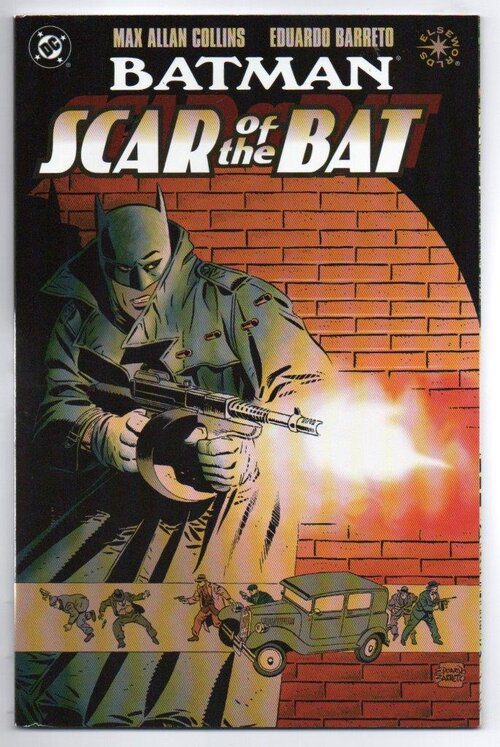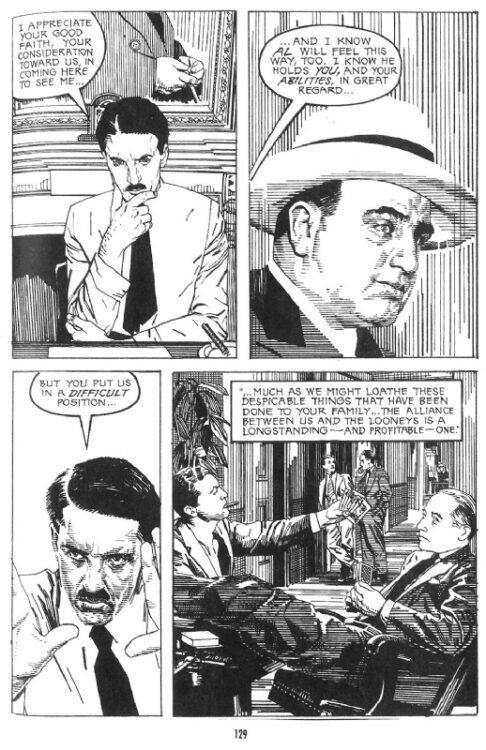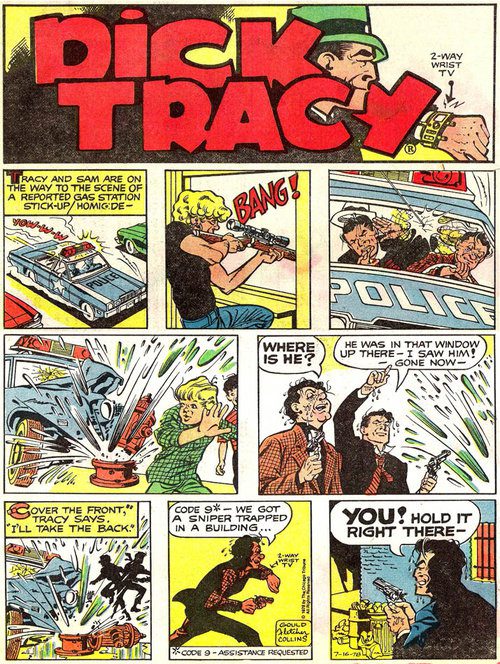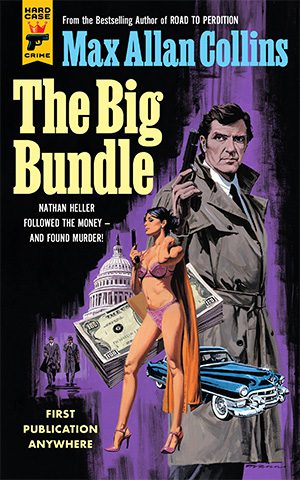I recently picked up a copy of Scar of the Bat by Max Allan Collins and Eduardo Barreto. It’s like a What if..? take on Batman, fixated on prohibition-era America with a historically real world application of the vigilante character. The book is relatively short but a fascinating insight into the writer, more than an expansion of the character. Collins takes the mythology surrounding the real people of 1930s Chicago and blends it with the mythology of the Batman franchise. He portrays the excesses of violence, the nature of greed, and the need for vengeance, and he does so while keeping within the confines of a Batman-style template.
But Max Allan Collins isn’t known for writing Scar of the Bat or any superhero story. Instead, Max Allan Collins is famous for a much riskier comic book project that combined all of his strengths and knowledge to produce one of the greatest graphic novels of the late twentieth century.

Recognizable Work
Max Allan Collins is probably most famous for writing the graphic novel on which the movie Road to Perdition is based. As a writer, he is proud of this as, nearly twenty-five years later, he still uses the ‘from the author of..’ on the covers of his other work. In an interview, Collins has stated ‘[F], or years my big credit had been Dick Tracy, but it wasn’t mine – I hadn’t created it. Road to Perdition was something famous that could be put on book covers with “author of,” This quote demonstrates his affection for the work but also introduces us to another example of his work, one that is much more famous than the writer, Dick Tracy. Collins took over the newspaper strip when the original creator, Chester Gould, retired, but despite working on the strip for fifteen years, the character would always be more famous than the writer. With Road to Perdition, the writer was able to receive direct recognition for his work.
The comic, with art provided by Richard Piers Rayner, is a historical gangster story and family drama focused on the relationship between father and son. Collins has stated that he had examined maternal relationships in previous work and, after being influenced by the manga hit Lone Wolf and Cub, he wanted to explore a father/son relationship.
Road to Perdition contains several themes particular to Collins’ work which makes it particularly interesting to examine. The following are the three central themes of the book, all of which run through Collin’s body of work in one form or another.
The Parent/child relationship.
After the death of Michael O’Sullivan’s wife and youngest son, the hired killer takes his remaining son on a road trip across America to protect the young boy from his previous, violent life. This theme is central to Road to Perdition. It is a combination of the extended relationship between Dick Tracy and Junior created by Chester Gould in 1937 and inspiration from the seminal manga Lone Wolf and Cub, which was first published in 1970. It is also the central theme of the movie adaptation of the comic, although there is a shift in the dynamic between father and son in that version. In Collins’ original, the narrative is about the bonding of the characters, the father and son coming to understand each other. In contrast, the movie uses the relationship to play out a redemption arc for Michael. Nevertheless, his son retains the innocence that he has lost and will never regain.

Cosa Nostra.
This mafia-related term means loyalty to ‘the family. Without this concept, the events in Road to Perdition would be over very quickly, as O’Sullivan would be allowed to exact his revenge at the start of the story. Unfortunately, the sense of family instilled in the prohibition of mobsters means that the top Mafia bosses in America protect Conner Looney. The hierarchy of crime often features in Collins’ novels, especially those co-written with Mickey Spillane and his first hit series Quarry. The Mob also features in his novelizations of feature films, including American Gangster, and his comic strip work for Ms. Tree.
A mix of Fact and Fiction.
Most of the antagonists in Road to Perdition are based on real-life figures from American history. Al Capone, Frank Nitti, Eliot Ness, and even the Looney who start O’Sullivan on the path of destruction. Collins extensively researches his work, and there is cross pollination of ideas and characters from series to series. He has written a trilogy of novels based on Eliot Ness, and the Nathan Heller series has the protagonist interacting with a host of celebrities including Orson Welles and Amelia Earhart. Collins uses real-life incidents and people to populate his stories giving them a level of authenticity. This is also true of his work on famous comic books such as the Batman title mentioned above. By using recognizable figures from history, Collins can evolve the fictional characters in relatable ways while commenting on historical events. The merging allows the overlaying of ideas and concepts and the ability to draw parallels between the real and fictitious.
Time and again, Collins returns to the same themes for his work and his extensive research has provided him with an uncanny insight into the history of the American underworld. This has allowed him to write some of the most in-depth, believable crime fiction of the last 40 years.

Publishing Perdition
Dealing with subjects of violence, honor, love, and relationships, Road To Perdition was released during a difficult time for the publisher Paradox Press, an adult-orientated imprint of DC Comics. The editor, Andrew Helfer, wanted to publish a number of crime comics produced by different creative teams. He reached out to Collins because of his previous work and good relationship with DC Comics. Unfortunately for all concerned, the comic industry was still reeling from the Boom and Bust era of the 1990s, and DC Comics was making cut backs on their publications. This resulted in Road to Perdition being canceled as a three-part, prestige format release.
Helfer convinced DC Comics to release Collins and Rayner’s work as a graphic novel, along with another title, The History of Violence which had a similar journey as Road to Perdition from the page to the screen. The graphic novel was a critical success and was reprinted several times. The New York Times and Publishers Weekly gave the book, and specifically the author, glowing reviews. The writer of The Witchfinder, Loren D Estleman, claimed the graphic novel was ‘the final evolution of the form once known as the ‘comic book.’
Although the graphic novel did not make waves in the mainstream comic industry, the final publishing strategy helped it to reach an audience within the book market that monthly comics usually could not reach. This was a boost not only for the book but also for Collins as an author. It also helped to bring the work to the attention of Hollywood and allowed for the famous movie adaptation.

Conclusion
Road to Perdition was not an easy comic to produce. Richard Piers Rayner created stunning work that bordered on hyperrealism, popular within auteur graphic novels. However, it was a slow process. This process was another blessing in disguise for Collins because the ‘somber tone of the drawings’ kept Collins ‘on the right track, serving the narrative beautifully’ (Collins’ own words). Everything that appeared to work against the project, such as the state of the industry, ultimately led to greater success for the finished product. This battle to exist is reflected in the finished work, with the bitter struggle for survival featuring prominently on the pages. A strong desire to publish the book and the creators’ determination led to a comic that was revered outside of the industry, as seen by the various literary reviews.
By having the time to work on the narrative and draw on all of his usual themes, Collins was able to focus on the greater thematic core of the narrative and produce a startling piece of work that stands as a highlight of his career; one that he is still proud of as demonstrated on the cover of his latest publication (See image above).

